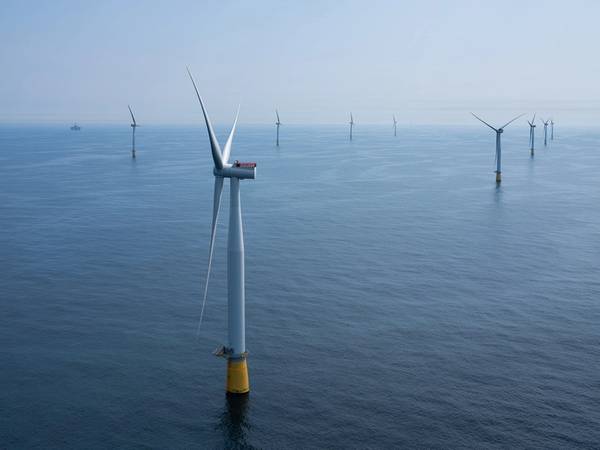
Norwegian energy firm Equinor and its partners inaugurated the world's largest floating offshore wind farm on Wednesday, whose output will supply nearby oil and gas platforms and cut their greenhouse gas emissions.
The Hywind Tampen wind farm, where Equinor is partnering with other oil firms including OMV, Vaar Energi, majority-owned by ENI, started producing power in November last year, with full output reached earlier this month.
Its 88 megawatts of capacity will cover around 35% of annual power demand for five platforms at the Snorre and Gullfaks oil and gas fields in the North Sea, about 140 km (87 miles) off Norway's west coast.
"We have a clear ambition in Norway with respect to CO2 emissions, to reduce them (by) 50% (by) 2030 ... To do that we need power," Kjetil Hove, Equinor's head of exploration and production in Norway, told Reuters onboard the platform.
"It is also about building a new industry that is going to be important to create more power in Norway."
The Hywind Tampen wind farm is expected to reduce CO2 (CO2) emissions by 200,000 tonnes annually, or 0.4% of Norway's total CO2 emissions in 2022.
Some environmentalists say the move is positive as it brings down the country's CO2 emissions, while others say Norway should instead stop producing oil and gas.
Calling the opening a "historic day", Prime Minister Jonas Gahr Stoere said the initiative would help Norway cut its CO2 emissions and that abruptly stopping oil and gas was not the solution in the energy transition.
"The world will continue to need gas and oil in this transitional phase. This is not a cut-off from one day to the other. So we have to minimise the footprint," Stoere told Reuters.
Hywind Tampen comprises 11 wind turbines fixed to a floating base that is anchored to the sea floor, rather than fixed to the ocean bed, a new technology industry experts say is suitable for use in deeper waters offshore that Equinor hopes to develop.
The technology is still in its infancy and costs at Hywind Tampen have risen from an initial estimate of 5.2 billion crowns ($491 million) in 2020, to 7.4 billion crowns, driven by raw material delays, quality issues, inflation, and currency effects.
Still, an expected rise in Norwegian CO2 taxation and higher gas prices had a positive effect on the project's financing, which also received almost 2.9 billion crowns in subsidies, Equinor said.
Norway, which is targeting 30 gigawatts of offshore wind power by 2040, which would double the country's current power output, is tendering its first commercial wind farms, including three floating ones, this autumn.
Equinor's other partners on the project are Wintershall Dea, majority-owned by BASF, INPEX Idemitsu and Norway's Petoro.
($1 = 10.5859 Norwegian crowns)
(Reuters - Reporting by Nora Buli, editing by Gwladys Fouche, Emelia Sithole-Matarise and Christina Fincher)